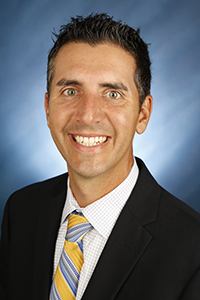I have been the Director of Enterprise Risk Management for just under two years, and the most important thing I’ve learned is this: if you are successful at ERM, you are successful at collaboration. A prerequisite to that success is shifting the perception of risk management from one of insurance loss and exposure to one of strategy. This strategic lens is an essential element of accomplishing our mission. It requires engaging leaders and working with them to define and globally understand risk.
ERM, by definition, cannot exist in a vacuum. Its oxygen is early integration with leaders across an organization and using that opportunity to create value. ERM’s value is identifying risks based on how one risk impacts another, and then helping leaders find solutions before negative things occur. Put another way, it is creating an environment ripe for good things to materialize. ERM must illuminate the value proposition and earn a seat at the table (or in my case, many tables).
To earn that invitation, credibility must be established with numerous leaders through active listening, immersive engagement and simply helping internal customers achieve success. It is an organic way to gain trust, thereby gaining an opportunity to help. And if an organization views ERM as helpful, it transforms ERM from a one-time project service to a partner consistently viewed as part of the organizational fabric. And that makes all the difference. This evolution takes time and happens only through collaboration with many talented and motivated people.
Collaboration is just a big word for earning trust and building relationships. And collaboration, by definition, requires at least two people (and likely more) who care about helping others succeed. ERM has not cornered the market on that collaborative skill set. I quickly found leaders around the organization who were seeking to solve big problems and enact meaningful change.
A great example of collaboration occurred between ERM, clinical risk, compliance and audit. It started when our clinical risk manager gave me the opportunity to learn her business. Basically, she invited me to live in her world, sit in on root cause analyses (RCA) and watch what she does and why she does it. Prior to my current ERM role, I had never been involved in an RCA. This experience not only helped me understand and evaluate the clinical side of the hospital, it taught me a way to methodically and objectively address a difficult outcome in a way that is neither punitive nor reactive. It approaches each event as an opportunity to prevent future problems.
Though RCAs are traditionally about patient safety, the clinical risk manager’s invitation turned out to be invaluable to my work because it exposed me to many of the risks in the hospital I had not seen previously. I was impressed by her passion and commitment to the process. So much so, I asked her if I could invite our compliance director to begin coming to RCAs as well.
During that time, I was partnering also with our compliance director and our audit director on a system risk assessment. We were working together to expand the scope of previous assessments to identify and address risks that were neither auditable nor compliance related. One of those risk findings, a primary finding, was that our organization had allowed inconsistent accountability to creep into our culture. This didn’t come as shocking news as this type of cultural drift isn’t unique to healthcare or any other business. But during our assessment, our leaders felt it needed to be addressed and that we had an opportunity to be better. When we presented our risk assessment findings to our CEO, she challenged us to find a solution. Our CEO is known for the phrase, “We may not be perfect, but we can be excellent.” With that in mind, our ERM Committee began its work.
As we thought through the problem, we recognized that accountability is something that is hard to fix and even harder to define. During those meetings, our compliance director recalled how invaluable the RCA process was at finding the root issue and manageable solutions to events. We decided to do an RCA on Accountability.
I invited the clinical risk director to join our ERM Committee and we set out a plan to tackle the problem. Almost every senior leader participated and all stakeholders were initiated into the world of RCA. We spent four months methodically defining what an accountable culture looked like, where we could do better and what causal factors led us here. It was a difficult and sometimes personal discussion. At times, it was downright uncomfortable. But through the experience, leaders began discussing and disclosing feelings they had never shared in this setting. We began to unpack longstanding issues and identify the barriers and processes that were holding us back. As we began to articulate solutions, we found it interesting that some were readily available within our organization.
We learned that we needed to return to our core values by rebuilding a culture of helpfulness. We needed to empower our employees with an understanding of how their work enables their peers to succeed. Most importantly, we needed to commit to this process for the long haul. Because, like collaboration, changes in culture take time. We’re not under the delusion that we’ve fixed this risk. But don’t confuse process with result. We’ve already enjoyed success because we’re experiencing a cultural reset and senior leaders are committed to change.
It’s important to note that ERM did not identify this opportunity nor produce the solution. Leaders around the organization identified the problem and senior leaders are working toward solutions. But clinical risk, compliance, audit and ERM were all part of the process. We brought people together and created an environment ripe for positive change. Therein is the value of ERM principles.
Ultimately, my job is to decrease uncertainty by identifying risks. Some of the risks, particularly cultural risks, can be difficult and complicated. By viewing an enterprise risk through the lens of a clinical risk process, I was able to witness a group of talented, motivated leaders with different roles work together to tackle a difficult problem in a unique way. And that is a good thing.









